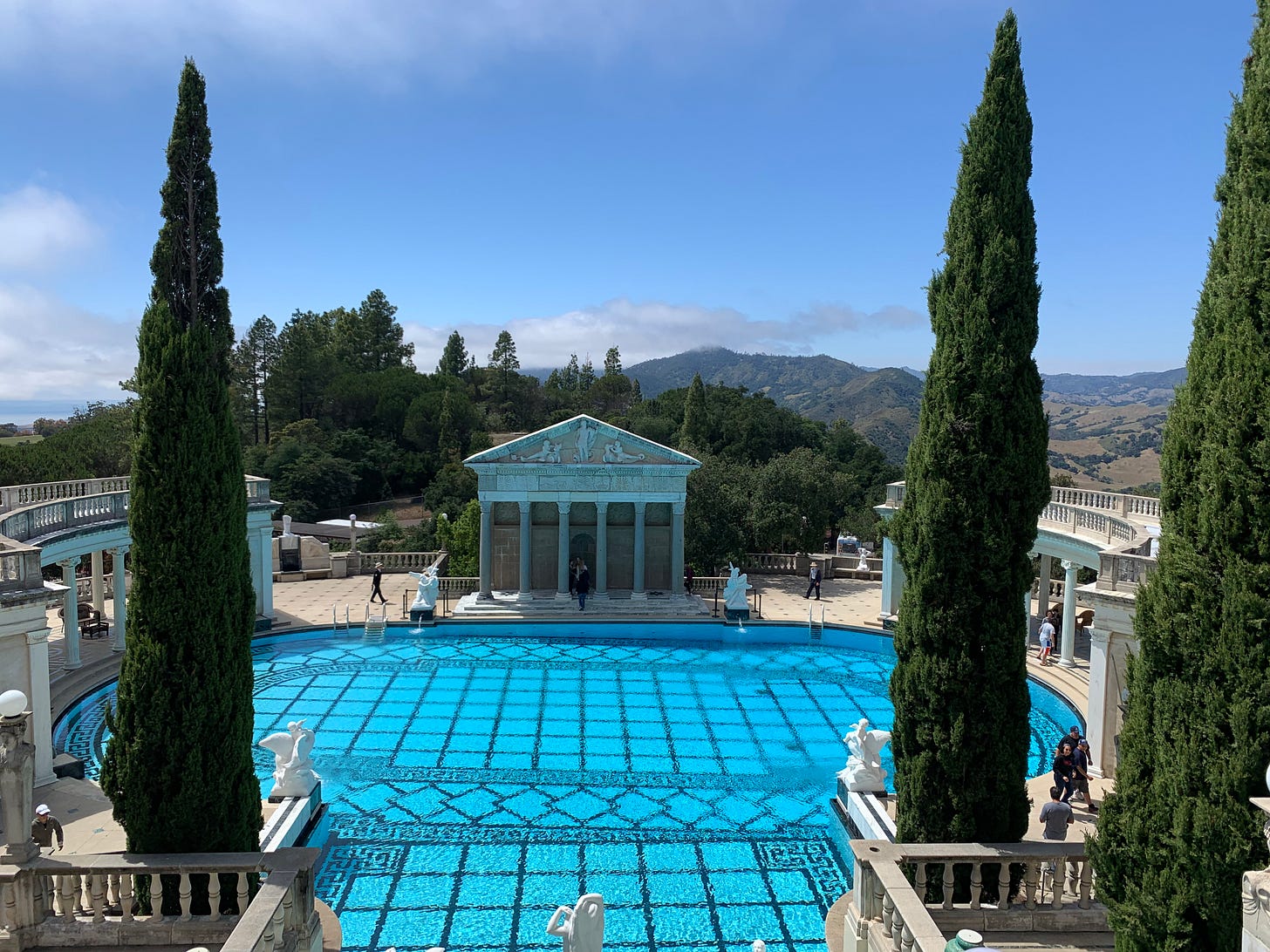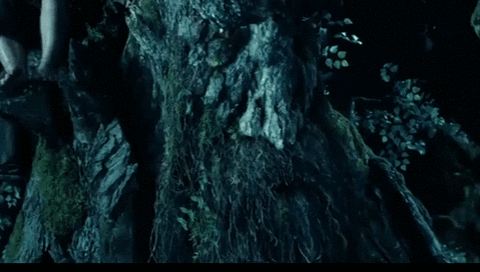~ Welcome to v10 of #thebalance ~
This week I am switching things up a bit.
Given summer is now officially here, emphasizing #getdoin’ just makes a little more sense. Speaking of which, just this past week, I was doin’ a little tourin’ myself. Crossing a bucket list item off my list - driving the CA-1; better known as the Pacific Coast Highway.
Given the beauty of the drive (and length!), it gave me ample time to think about this week’s #getsmart topic: TREES… and their networks.
More below :)
Editor’s Note: Please make sure to add #thebalance newsletter to your ‘my contacts’ list so you don’t miss out on the mostly weekly emails. There have been reports of gmail junkin’ this beautiful newsletter.
***Just as a refresher, the core thesis of this newsletter is to pique your curiosity by aggregating interesting content in a thematic, bite sized, and relevant manner (w/ original posts occasionally) - ranging from blog posts, books, music, events, podcasts, and ideas on how to stay active, travel or otherwise... And please keep sending feedback my way… the goal is to make this thing worth it for you!***
If you like what you’re reading, please share by forwarding (‘sign up now’ button at the bottom) this email onto your people in your network and/or Tweet some support!
#GetSmart
Who said trees were dumb?
There is growing evidence out there claiming that trees do indeed communicate and collaborate among their own tree species as well as with other trees. Oak to Oak. Cedar to Maple. Fir to Beech.
Remember Avatar? Turns out the movie was onto something with the fictional forest networks.
One might even say that trees are alive IRL…..

>>>> Wood-Wide Web
Nearly two decades ago, ecologist Suzanne Simard discovered that trees communicate and send nutrients to one another via a network of underground fungi (think mushrooms!) buried in the Earth.
Comparing tree root networks to the neural networks in the human brain or even the internet, Simard has found through her years of research that trees have a symbiotic relationship with fungi (I will be covering amazing fungi in a future #thebalance). By tapping into the mycelium of the mycorrhizal (see below) fungus, trees are able to gain & give resources (Can trees have trade wars? lol) as well as send signals to other trees in the forest. They can even send distress signals about drought and disease or insect attacks… and other trees then alter their behavior when they receive these messages (nuts!!). Tapping into mycelium has proven as a particular effective way to communicate for trees especially if they are farther away from one another in the forest.
Mycorrhizal Networks: The fine, hairlike root tips of trees join together with microscopic fungi to form the basic links of the network, which appears to operate as a symbiotic relationship between trees and fungi, or perhaps an economic exchange.
>>>> Tree talk
Forest trees have evolved (it all comes back to evolution, baby!) to live in cooperative, interdependent relationships, maintained by communication and a collective intelligence similar to an insect colony or the world wide web…. or even people.

To communicate through the network, trees send chemical, hormonal and slow-pulsing electrical signals, which scientists are now just beginning to understand.
As the Smithsonian Mag interview with Edward Farmer at the University of Lausanne in Switzerland puts it, "Prof. Farmer has identified a voltage-based signaling system in tree root networks that appears strikingly similar to animal nervous systems (although he does not suggest that plants have neurons or brains). Alarm and distress appear to be the main topics of tree conversation.”
Like radio antennas, trees are even able to talk to each other through the air, using pheromones and other scent signals. This famous German forester named Peter Wohlleben tells this crazy tree talk story as an example, highlighting their surprising sophistication:
“On the hot, dusty savannas of sub-Saharan Africa, the wide-crowned umbrella thorn acacia is a widely distributed and well known tree (think Lion King, Rafiki and Simba). When a giraffe starts chewing acacia leaves, the tree notices the injury and emits a distress signal in the form of ethylene gas. Upon detecting this gas, neighboring acacias start pumping bitter tannins into their leaves. In large enough quantities, these compounds can sicken or even kill large herbivores.
Giraffes are aware of this effect, however, having evolved with acacias, and this is why they browse into the wind, so the warning gas doesn’t reach the trees ahead of them. If there’s no wind, a giraffe will typically walk 100 yards— farther than ethylene gas can travel in still air—before feeding on the next acacia tree. Giraffes, you might say, know that the trees are talking to one another.” (it all comes back to evolution, baby!)

>>>> Anti Trees & Climate Change
Given all this tremendous tree talk (see what I did there), trees are clearly more than just a plant - they can basically talk for one, but also provide habitat, store carbon, produce oxygen, provide food, among many other things. It saddens me to see all this deforestation continuing to go on globally. See below chart as an example.

….But I do gain more hope when I see things like cities incorporating more plants into their urban infrastructure (a topic I also plan to cover in a future issue). Check out the Park Royal Hotel in Singapore, for example:

#GetGroovin’
I spent a lot of time in the car this past week. I spent a lot of time off grid. Good thing I had #thebalance playlist in full download mode.
Check it out if you haven’t yet - I have been curating it for your listening pleasure.
That Summer19 playlist 🔥 is coming soon…
Bonus listen: Tim Ferriss interviewing Paul Stamets, How Mushrooms can save you and perhaps the world
From Tim Ferriss, “Paul is the author of a study in Nature’s Scientific Reports, which details how mushroom extracts—specifically extracts from woodland polypore mushrooms—can greatly reduce viruses that contribute to bee colony collapse. I hope you enjoy this entire interview, but if you only have time to listen to one part, I recommend checking in at the [56:24] mark to hear how Paul’s first experience with psilocybin mushrooms affected his lifelong stutter.”
#GetDoin’
If you haven’t had a chance to drive the Pacific Coast Highway and check out the coastal treasures Cali has to offer along the way, I HIGHLY recommend. It is an absolutely stunning drive with even more stunning places to visit. Some photos from my trip below.


Tree networks IRL!!

Have a great week all!!
Curiously,
Brian
***Including a snippet from the Exponential View newsletter (a must read for me each week), which posts the below carbon tracker. Latest update below:
“Each week, we’re going to remind you of the CO2 levels in the atmosphere.
The latest measurement (as of June 20): 414.06 ppm; 12 months ago: 409ppm; 50 years ago: 326.66ppm; 250 years ago, est: 250ppm. Share this reminder with your community by forwarding this email or tweeting this.
We’ve passed the seasonal peak for readings of CO2 at Mauna Loa. As our plants green, particularly in Siberia, they will suck some of the CO2 out of the atmosphere. Focus on the delta over the past 12 months. The delta itself continues to increase. We are ~3,986 days from the dreaded 450ppm threshold.”***
A little bit about me:
My friends call me Block. I am endlessly curious and eternally optimistic - obsessed with digesting content, seeking to broaden my perspective and always striving for balance (hence this newsletter).
Minnesota born & raised, I now live and work in New York City at a decentralized finance company. I have a passion for new ideas, different perspectives, and all things technology.
I am an open finance enthusiast, futurist, investor, entrepreneur, builder, advisor, life long learner, hockey player, traveler, podcast addict, hip-hop head, e-newsletter junkie, event planner, and comedic-short producer.
“Find a question that makes the world interesting.” - Paul Graham
If you enjoy #thebalance newsletter, please show some love on the interwebs. Tweet some support!





